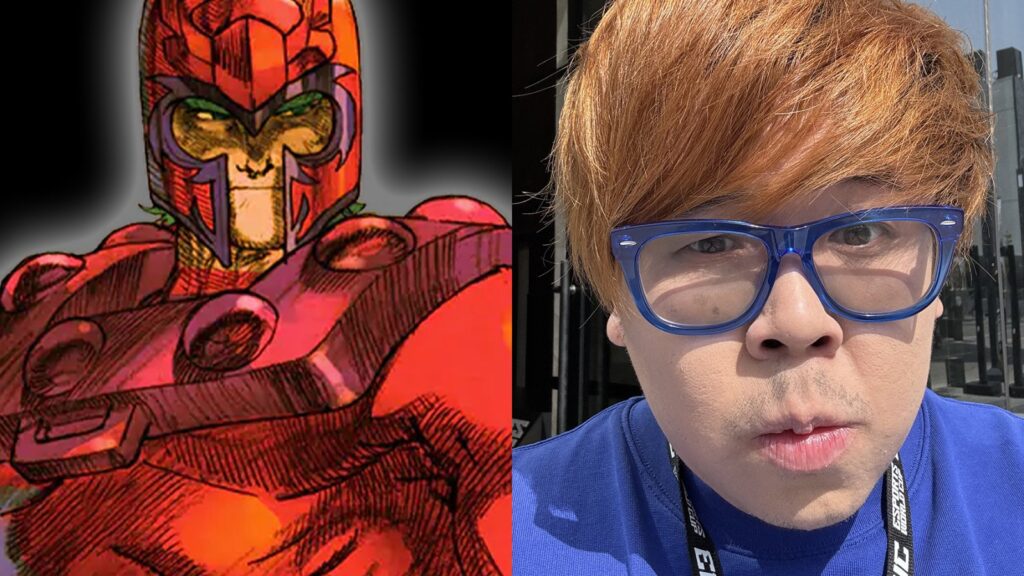‘Marvel vs. Capcom 2’ Pro Justin Wong Is a Real-Life Final Boss
Marvel vs. Capcom Fighting Collection has only been out for a week, yet players across every platform — PC, PlayStation, even Nintendo Switch — have been facing an uphill battle. It’s not an issue caused by glitches or connectivity issues, although they exist, but instead a single player whose total domination of the Marvel vs. Capcom 2 online leaderboards has left many shaken. Their name is Wazzler, and they cannot be stopped.
RT this tweet or you will face LE WAZZLER pic.twitter.com/K6YlQSPunt
— Doc (@xDrHellx) September 15, 2024
By now, most know that the person using the handle Wazzler is none other than Justin Wong, 38, otherwise known as the world’s best Marvel vs. Capcom 2 player. With that, it all makes sense, but it doesn’t make the pill less bitter to swallow for anyone matched up against him. During the game’s first weekend available to the public, fans playing online ranked matches found themselves routinely squared up with Wong, and after many brutal beatdowns took to social media to spread warnings of the Wazzler.
But why is a nine-time Evo champion terrorizing the Marvel vs. Capcom 2 community? Apparently, it’s just for love of the game.
“I’ve just been so happy because it’s a game that I grew up playing,” Wong tells Rolling Stone. “I remember seeing this game being installed in my arcade and playing it for the first time ever. The fact that I started playing the game in the year 2000 and now we’re here in 2024, and we could play online and play with so many people around the world? I just couldn’t stop playing.”
While Marvel vs. Capcom 2 had online connectivity from the start — both in its original release on Dreamcast in 2000, and the 2009 re-release for Xbox 360 and PlayStation 3 — many fans felt that the network options were unreliable; in-person was the only true way to play. But disc versions of the game are hard to come by today, and digital versions were discontinued and scrubbed from storefronts back in 2013, which made this year’s release of the game with better online functionality a huge deal for fans.
It began on PC on launch day, where players on Steam were logging online on only to get skill-checked by the mysterious Wazzler. Wong, streaming on Twitch, has been putting seven to eight hours a day into the game, making it extremely likely that anyone competing in ranked mode will eventually run into him. After countless defeats, many took to Steam forums to jokingly post negative reviews or even demand a refund after experiencing the Wazzler’s fury. One review even accused Wong of taunting them on the in-game mic with instantly meme-able phrase, “Putting the fun in refund.”
— Justin Wong (@JWonggg) September 12, 2024
Wong himself hasn’t made any attempt to hide his identity and quickly got in on the joke through his own social channels and streams. While some have accused him of “smurfing” — a term used for high-tier players creating alternate accounts to crush low level combatants — anyone who watches the Evo champion’s stream knows the Wazzler’s identity.
“My initial reaction was that they are treating me like the boogeyman, like I’m a horror villain,” he says. “‘Yo, beware the Wazzler.’ It just sounds like some horror movie that’s waiting to happen.”
Wong tells Rolling Stone that the handle was given to him back in 2003 by the Seattle fighting game community and it’s been used periodically since. Yet despite the fervor online, he rarely experiences people who run from the fight when they see his name. In fact, most players take it as a challenge or an honor to face an esports legend.
THE WAZZLER'S NAME IS JUSTIN WONG pic.twitter.com/zKcmFXwp1V
— Hives (Comms Open… for now) 🎨 (@DrHives) September 15, 2024
“I don’t get rage quits at all,” he says. “Actually, I got one today. But that’s like one over 50, 60 hours of playing.”
For Wong, there’s joy in becoming a lighting rod, drawing attention to the game. Despite recent hits like Street Fighter 6 and Tekken 8 selling strongly, the fighting-game community has historically been more niche than with other genres. He views the buzz surrounding his online presence as a net positive.
“It seems like they either want to be on a YouTube video,” he says, “or they want to learn and get some feedback, or [just] see how strong ‘The Wazzler’ is. But I appreciate those people just turning on their systems and hopping on rank to see if they can match up with — or just play the game, right? That’s the cool part.”
Within the first two days post-launch, Wong had already taken the top position on the Steam leaderboards, leading him to transition to PlayStation 4 for a fresh challenge. After becoming number one there, he jumped to the Nintendo Switch, literally buying a brand-new console to avoid holding his daughter’s device hostage.
“I bought the OLED [model] because it has the ethernet port in the back,” he says. “We don’t do Wi-Fi out here.”
Just bought the switch version of Marvel vs Capcom collection
Can’t wait to play with the Switch users pic.twitter.com/zYqJX4XV2M
— Justin Wong (@JWonggg) September 15, 2024
In terms of the skill disparity between the platforms’ users, one might assume that hardcore PC or PlayStation players would pose a greater threat than those on the more casual Switch users, but Wong sees things a surprising amount of talent in surprising ways, mainly from newcomers who aren’t being held back by the game’s “meta.”
A game’s meta is essentially the overarching strategy or common tactics that players pick up, creating a trend. In fighting games, that could be a specific combo loop to repeat or known glitch to exploit; in Marvel vs. Capcom 2, it’s often finding the right combination of characters that create a synergy between their moves that your opponents can’t overcome. Metas evolve over time, but with a new generation of players unrestricted by memories of older tactics and trends comes innovation.
“[PlayStation] has the sweatiest players,” he says. “Any of the OGs, or if you’re trying to fight the meta of the game, PlayStation is the place to play. I think Steam [PC] is like a mix of both, where there’s casual players plus some top players as well. Switch, I would say, [is] the most fun because there are really good players that play the lower tier characters, but they don’t meta.”
Seeing a pool of competitors using different tactics outside the established meta is one of the most exciting aspects of the game for Wong, although he warns that he’s coming for Xbox fans next when that version of the game launches down the line.
“[When] Xbox comes out, then the boys of the Xbox community, they might refund the game, too,” he jokes. “But I don’t know what Microsoft policies are when it comes down to that.”
Regardless of the platform, it’s easy for veterans like Wong, with deep knowledge of Marvel 2’s history, to identify opponents from the older generation who are stuck in their ways. From the moment they make their character selections, legacy players stand out like a sore thumb.
“The reason why I know it’s a bunch of old heads that are coming back is because when I’m running into rank and I see their teams, they’re playing like the 2002, 2003 meta,” he says. “I’m just like, ‘Oh, that’s cute.’”
The Wazzler waiting for Xbox to get The Marvel collection pic.twitter.com/i4eIpouHSv
— UnRooolie ❼ (@unrooolie) September 16, 2024
Wong’s ultimate goal is to hold the top rank on the leaderboard across all three platforms simultaneously, a feat he hopes to accomplish all at once live on Stream by retaining a high position then locking in the lead one after the other in rapid succession. He’s already claimed the number one rank on each platform individually, but loses it every time he jumps to focus on climbing a different system’s leaderboard, so balancing all three is a tight needle to thread. But even after total world domination, he intends to keep playing just to experiment with the game he’s loved most for almost 25 years. After all, there’s always more to learn.
“There’s 56 characters in the game, and when you think about the professional level, maybe there’s only 10,” he says. “But I enjoy playing all 56 characters. Every character has some type of sauce.”
Updates and balances to the newest version of the game have also opened doors for relearning characters and team synergies. His current favorite is a duo of Resident Evil’s Jill Valentine and X-Men’s Juggernaut, the latter being previously known as a powerhouse with specific glitches to exploit, but now has been “nerfed,” or rebalanced to have his advantages dampened. For Wong, it’s just another skill test.
“So many people were doom tweeting, ‘Oh my god, I can’t believe they nerfed Juggernaut,’” he says. “‘He’s so bad, he’s unplayable. Yada yada yada.’ So, I decided to take matters into my own hands and see how I can make Juggernaut viable.”
Imagine an eldritch horror is stalking the halls and going "teehee, having a blast" as it devours everything in its path, thats mvc2 online https://t.co/Ht7xSaNGlj
— #1 Smite 2 Fan (@honzogonzo) September 16, 2024
Outside of Marvel vs. Capcom 2, the new collection incudes five other fighting games from the franchise’s history, although their footprint online has been much smaller. Wong has mostly been committed to the game that made him famous (well, the other one). Wong tells Rolling Stone that the game he’s most interested in exploring is the first entry in the series, 1994’s X-Men: Children of the Atom, which he describes as “the Street Fighter II” of the saga for its retro controls that may throw players who are only familiar with later installments.
In the end, Wong doesn’t want his winning streak to put off new players who are interested in the game, but rather hopes that it sparks interest in continuing to build the community. It’s a lot of work, but he’s here to provide advice through his streams and YouTube tutorials.
Beware…. the wazzler… pic.twitter.com/9gA7zGZYyU
— Hives (Comms Open… for now) 🎨 (@DrHives) September 15, 2024
“For newer players, I hope they stick with it,” he says. “Marvel 2 is a very unforgiving game. The old school fighting games are like that, where they were just so mean to you. If someone’s better than you, then they’re better than you. That’s what it comes down to. But I’m pretty sure a lot of people in the community [would] help [you].”
But for many, the intimidation factor remains. Imagine if LeBron James suddenly showed up at your varsity game and decided to take the trophy. Yet, Wong insists it’s all in good fun — mostly.
“Should people fear the Wazzler? I don’t know,” he says. “To me, it seems like everyone’s having a swell old time. Or maybe it’s me having a swell old time.”
“I guess, if you are a modern fighting game player or new to fighting games, then yeah, maybe you should be a little scared.”





